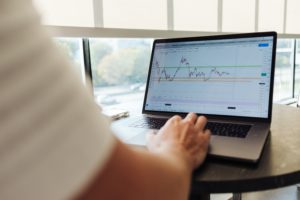Are you making the most of your location data? Geospatial data—also known as location data—can be harnessed to benefit your business in more ways than one.
Use it to not only learn more about your customers, their habits, and where you’re performing (and where you’re not), but also to better understand your marketplace and ultimately make better business decisions.
Why Geospatial Analytics?
Geospatial data is time-based data that is related to a specific location on the Earth’s surface. According to IBM, it “typically combines location information (usually coordinates on the earth) and attribute information (the characteristics of the object, event or phenomena concerned) with temporal information (the time or life span at which the location and attributes exist).”
Geospatial analytics leverages spatial information together with traditional types of data to add further context and information to data analysis. With the spatial dimension, it is possible to uncover additional insights, relationships between variables, reveal patterns and trends, and ultimately unlock additional value for businesses. These results can be communicated using visualizations like maps, graphs, statistics, cartograms, etc. that have easy-to-recognize visual patterns and images.
Types of Geospatial Data
There are two main types of geospatial data:
- Vector: Features are composed of vertices and paths, and each feature has a corresponding set of properties. These properties can be stored as tabular data, with the vector geometric feature as a new column within the data. Examples are:
- Point: It represents a very small feature using only a latitude and a longitude, or an x and y, such as a house location on a city map or a street sign location on a street map.
- Line: It represent features connecting ordered points using paths and are used to represent linear things such as roads, rivers, and powerlines
- Polygon: It represents features connecting ordered points and closing the loop (Start and end points are the same) and is used to display areas, such as administrative boundaries and building footprints.
- Raster: The information is assigned on a pixel-by-pixel basis. A pixel is defined at a specific resolution and location (size) with a specific value. The combination of pixel size and value gives information about a raster data layer.
Use Cases for Geospatial Data & Analytics
Many industries are using geospatial data and analytics in order to make their business decisions more effective. Here are a few examples of such sectors:
Retail
Retail can harness the power of location data in order to optimize foot traffic, identify potential brick-and-mortar locations, analyze market potential, conduct customer profiling, carry out competitive analyses, optimize supply chain & logistics, improve the customer experience, enhance marketing efforts, and more.
The Public Sector
The public sector can use geospatial data and analytics to optimize resource allocation, improve public services, create hazard maps, conduct risk assessments, enhance evacuation planning, improve communication with the public, and more.
Telecommunications
The telecommunications sector can leverage location data to perform coverage analyses, enhance network planning, optimize infrastructure deployment, understand user demand, identify dead zones, use predictive modeling, and improve overall service quality.
Consumer Packaged Goods
Consumer packaged goods (CPG) can use geospatial data to perform store location analyses, optimize shelf space, understand customer buying patterns, employ targeted promotions and marketing, improve distribution efficiency, identify potential areas for market expansion, better understand seasonal demand variations in different regions, and more.
Environmental Agencies
Environmental agencies can make extensive use of geospatial data and analytics to monitor, manage, and protect natural resources and ecosystems. They can use such data to map the distribution of endangered species, create detailed habitat maps, better identify potential threats to ecosystems, manage protected areas more effectively, conduct Environmental Impact Assessments (EIAs) for development projects, and more.
The Benefits of Using Geospatial Analytics
Geography is not only a feature in your data; it can also bring a ton of strategic value to your business, providing you with a competitive edge by:
Driving Customer-Centric Strategies
Customer-centric strategies provide a deeper understanding of customer preferences, demographics, and economic influences.
Prioritizing Investments
Prioritize investments, optimize channels, and develop targeted solutions to meet customer needs effectively. This can be achieved by using geospatial analytics for facility location planning and resource allocation.
Optimizing Operational Processes
Optimize operational processes — including supply chain management and resource allocation — by using geospatial analytics to power fleet management and route optimization.
Making Informed Decisions
By using geospatial analytics for tasks like infrastructure planning and field service optimization, it can assist businesses in making informed decisions about site selection for retail outlets, offices, manufacturing plants, and other strategic assets.
Uncovering Revenue Patterns
Geospatial analytics can also help you uncover revenue patterns and trends across regions or customer segments.
The Bottom Line
Geospatial analytics is a key strategy to unlock business success in an increasingly competitive landscape, with geography acting as an information unifier.
Therefore, if your information is siloed, using location intelligence can help uncover a whole new view of your business, its impact, and its potential!
The time to adopt a geospatial perspective to unlock your business potential is now! Book some time with our team to better understand how we can make geospatial analytics work for you.






